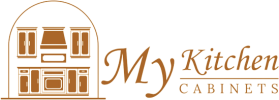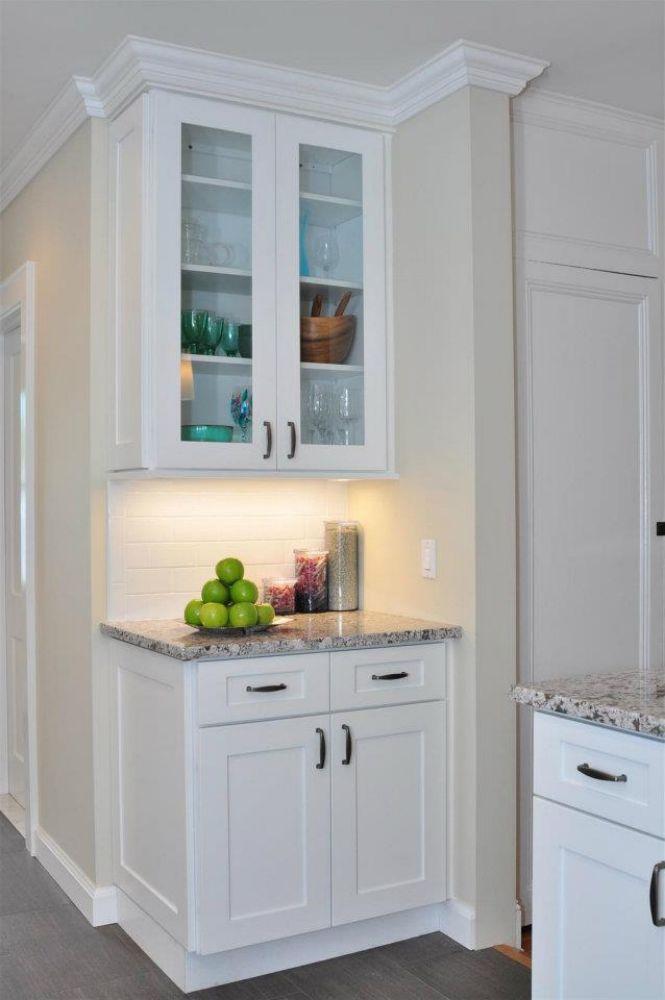Understanding Formaldehyde Levels in Kitchen Cabinets Explained
When designing or remodeling a kitchen, one of the most overlooked factors affecting home health is indoor air quality. Kitchen cabinets, which occupy significant surface area in most homes, can be a major contributor to chemical emissions. Many homeowners are unaware that traditional cabinet materials may release formaldehyde—a colorless gas linked to respiratory irritation and other health concerns.
Understanding formaldehyde levels in kitchen cabinets explained helps homeowners make informed decisions about their cabinetry choices. Selecting certified low-emission cabinetry, such as Formaldehyde Levels in Kitchen Cabinets Explained, can dramatically improve indoor air quality and create a healthier living environment for your family.
What Is Formaldehyde and Why It Matters in Cabinetry
Formaldehyde is a chemical compound commonly used in adhesives, sealants, and resins that bond composite wood products. While it plays a role in creating durable materials, it can also release volatile organic compounds (VOCs) into indoor air.
This off-gassing process continues long after cabinets are installed, gradually emitting harmful vapors that affect air quality. Because formaldehyde is a known irritant and potential carcinogen, understanding and reducing exposure is crucial for maintaining a healthy home—especially in spaces like kitchens where ventilation may be limited.
How Formaldehyde Is Used in Kitchen Cabinet Manufacturing
Cabinetry typically consists of various wood-based materials such as particleboard, plywood, and MDF (medium-density fiberboard). These materials often rely on resins that contain formaldehyde for binding fibers and increasing durability.
The most common types of formaldehyde-based resins include:
-
Urea-formaldehyde (UF): Frequently used in composite wood due to its cost efficiency but emits higher levels of VOCs.
-
Phenol-formaldehyde (PF): Found in exterior-grade plywood and produces fewer emissions.
-
Melamine-formaldehyde (MF): Used in laminates and coatings with moderate emission levels.
Cabinets that utilize these resins can continue releasing low levels of formaldehyde for months or even years after installation. The goal of modern manufacturing is to reduce or eliminate these emissions through safer adhesive technologies.
The Health Effects of Formaldehyde Exposure
Prolonged exposure to formaldehyde can lead to a variety of health concerns, ranging from mild irritation to more serious conditions. The effects depend on the concentration of exposure and individual sensitivity.
Short-term exposure may cause:
-
Eye, nose, and throat irritation
-
Coughing or wheezing
-
Headaches or dizziness
Long-term exposure has been linked to:
-
Chronic respiratory problems
-
Worsening asthma or allergies
-
Increased risk of certain cancers
Children, the elderly, and those with existing health conditions are particularly vulnerable. That’s why monitoring and controlling formaldehyde levels in cabinetry is essential for maintaining indoor wellness.
Formaldehyde Emissions and Off-Gassing Explained
Off-gassing refers to the release of volatile organic compounds (VOCs), including formaldehyde, from manufactured materials into the air. Cabinets made from engineered wood can continue off-gassing even after installation, contributing to prolonged indoor exposure.
Factors that influence off-gassing include:
-
Temperature: Warmer environments accelerate emissions.
-
Humidity: Higher humidity increases release rates.
-
Ventilation: Poor air circulation traps VOCs indoors.
To minimize exposure, homeowners should prioritize materials tested for low emissions and ensure proper ventilation during and after cabinet installation.
Understanding Formaldehyde Emission Standards
In response to growing awareness of indoor air quality, several agencies have established strict standards for formaldehyde emissions. Understanding these regulations helps you make safer choices when selecting cabinets.
Key standards include:
-
CARB Phase 2 (California Air Resources Board): One of the strictest regulations, setting low emission limits for composite wood products.
-
EPA TSCA Title VI (Toxic Substances Control Act): National standard aligning with CARB Phase 2, requiring labeling of compliant products.
-
Greenguard Gold Certification: Ensures products emit extremely low levels of VOCs, making them suitable for sensitive environments like homes and schools.
Choosing cabinetry that meets these standards ensures your kitchen remains both beautiful and safe.
Measuring and Monitoring Formaldehyde Levels in Your Home
Formaldehyde levels are measured in parts per million (ppm) or parts per billion (ppb). According to the U.S. Environmental Protection Agency (EPA), average indoor formaldehyde levels typically range between 0.03 and 0.08 ppm, but levels above 0.1 ppm can cause noticeable irritation.
Homeowners can measure formaldehyde levels using:
-
Air quality testing kits: Available for at-home sampling.
-
Professional inspections: Conducted by environmental health specialists.
If elevated levels are detected, ventilation, air purification, or replacing high-emission materials can significantly reduce concentrations.
How to Identify Low-Formaldehyde and Formaldehyde-Free Cabinets
Cabinets that meet environmental standards will often carry certification labels or documentation. When shopping, ask manufacturers or suppliers about emission compliance and material composition. Look for:
-
Labels stating “No Added Urea-Formaldehyde (NAUF)” or “Ultra-Low-Emitting Formaldehyde (ULEF)”.
-
Greenguard Gold-certified products, which have undergone third-party testing.
-
Water-based finishes and adhesives that reduce VOC release.
These designations indicate safer, more environmentally responsible cabinetry options for your home.
Comparing Traditional Cabinets and Low-Emission Alternatives
Traditional cabinets, though cost-effective, often rely on particleboard and MDF bonded with urea-formaldehyde resins. While durable, these materials emit higher levels of VOCs compared to eco-certified alternatives.
Low-emission and Greenguard Gold-certified cabinets use formaldehyde-free adhesives or natural resins, such as soy-based glues. They may also incorporate solid wood or sustainably sourced plywood, minimizing environmental and health impacts.
While initial costs for low-emission cabinets may be slightly higher, their long-term benefits—better air quality, improved health, and greater durability—make them a worthwhile investment.
The Role of Finishes and Coatings in Formaldehyde Emissions
Even if cabinet materials are low in formaldehyde, finishes and sealants can add unwanted emissions. Traditional oil-based varnishes, stains, and paints often contain solvents that emit VOCs during curing and beyond.
Opting for water-based or UV-cured finishes significantly reduces emissions. These modern alternatives offer excellent durability, aesthetic appeal, and low environmental impact. Proper curing and ventilation during installation are also essential to minimizing residual chemical odors.
Reducing Formaldehyde Exposure During Installation
Cabinet installation is a critical phase when formaldehyde emissions can spike due to cutting, drilling, and handling materials. Following these best practices can help reduce exposure:
-
Ensure good ventilation during installation and for several weeks afterward.
-
Avoid sealing cabinets immediately to allow natural off-gassing before applying finishes.
-
Use air purifiers with activated carbon filters to capture airborne VOCs.
-
Keep humidity below 50% to slow formaldehyde release.
Professional installers familiar with eco-friendly cabinetry can help ensure a safe and efficient process.
The Benefits of Choosing Greenguard Gold-Certified Cabinets
Greenguard Gold-certified cabinets undergo rigorous testing to verify low chemical emissions, including formaldehyde. These cabinets meet safety thresholds suitable for sensitive environments such as homes, schools, and healthcare facilities.
Benefits include:
-
Significantly reduced VOC emissions.
-
Improved indoor air quality.
-
Enhanced peace of mind for families with children or respiratory sensitivities.
-
Environmentally responsible manufacturing practices.
By investing in certified cabinets, you ensure both aesthetic excellence and long-term health benefits.
Environmental Impact of Formaldehyde-Free Cabinets
Beyond personal health, selecting low-formaldehyde cabinetry supports a sustainable planet. Traditional manufacturing processes release VOCs into the atmosphere, contributing to smog and environmental pollution.
Formaldehyde-free cabinets reduce this impact through cleaner production methods, renewable materials, and recyclable components. Supporting manufacturers who prioritize sustainability helps foster greener industry practices while protecting your family’s well-being.
Ventilation and Air Purification for Ongoing Protection
Even with low-emission cabinetry, maintaining healthy air quality requires consistent ventilation. Modern homes are tightly sealed for energy efficiency, which can trap airborne pollutants inside.
To maintain safe air quality levels:
-
Open windows regularly to allow fresh air exchange.
-
Install range hoods and exhaust fans in kitchens and bathrooms.
-
Use air purifiers equipped with HEPA and activated carbon filters.
-
Maintain HVAC systems to ensure optimal airflow and filtration.
These simple steps help ensure your home remains free of lingering pollutants over time.
The Long-Term Health Benefits of Low-Formaldehyde Cabinets
Low-formaldehyde cabinets create a healthier, more comfortable living environment. Families who make the switch often experience fewer allergy symptoms, improved respiratory function, and reduced fatigue.
Cleaner air promotes better sleep, stronger immune systems, and overall well-being. Moreover, homes built with non-toxic materials hold higher resale value, appealing to health-conscious buyers seeking safe, sustainable living spaces.
How to Maintain a Healthy Kitchen Environment
Healthy cabinetry is only part of the equation. To sustain a toxin-free kitchen, pair your low-emission cabinets with complementary practices:
-
Choose non-toxic cleaning products free of ammonia and chlorine.
-
Use natural air fresheners like essential oils instead of synthetic sprays.
-
Keep humidity under control to reduce chemical release and mold growth.
-
Wipe cabinet surfaces regularly with mild, eco-friendly cleaners.
These everyday habits support the benefits of low-formaldehyde cabinetry and maintain a safer cooking environment.
Industry Innovations in Reducing Formaldehyde Emissions
The cabinetry industry continues to evolve toward safer, sustainable production. Manufacturers are investing in new technologies to further minimize formaldehyde and VOC emissions.
Innovations include:
-
Soy-based adhesives that eliminate the need for formaldehyde entirely.
-
UV-cured finishes with zero solvent content.
-
Recycled and reclaimed wood materials that reduce environmental impact.
-
Advanced ventilation systems in factories to limit emissions during production.
These advances reflect a growing commitment to consumer health and environmental responsibility.
The Role of Homeowners in Promoting a Healthier Future
Homeowners play a crucial role in shaping the future of sustainable design. Every purchase decision influences manufacturing trends and encourages companies to adopt safer, greener practices.
By choosing low-formaldehyde cabinets, water-based finishes, and eco-certified materials, you help accelerate the movement toward healthier homes and cleaner air. Small, mindful choices today can lead to widespread improvements in home safety and environmental preservation.
Conclusion
Understanding formaldehyde levels in kitchen cabinets explained empowers homeowners to make safer, more informed decisions about their living environments. Traditional cabinetry materials often emit harmful compounds that can compromise indoor air quality, while certified low-emission products help protect your family’s health.
Choosing Greenguard Gold-certified or formaldehyde-free cabinets ensures your kitchen remains beautiful, functional, and safe for years to come. By prioritizing clean materials, proper ventilation, and sustainable practices, you create a home where design and wellness coexist in perfect harmony.

